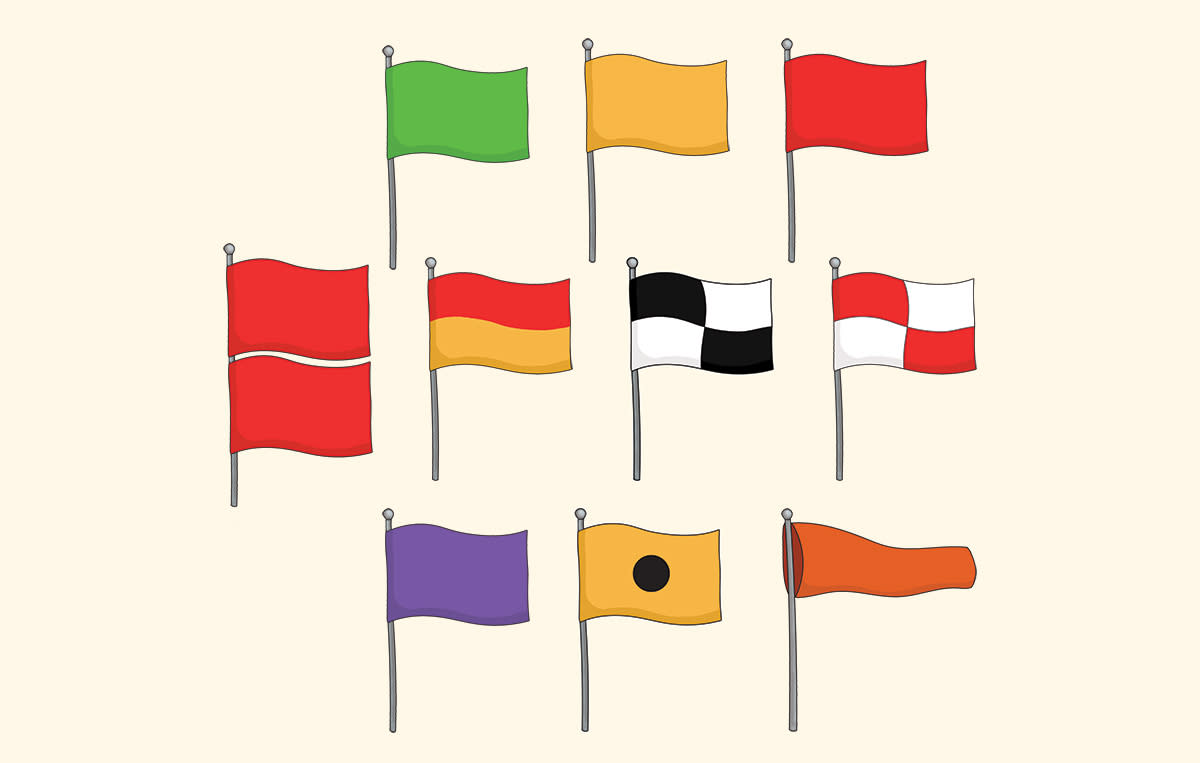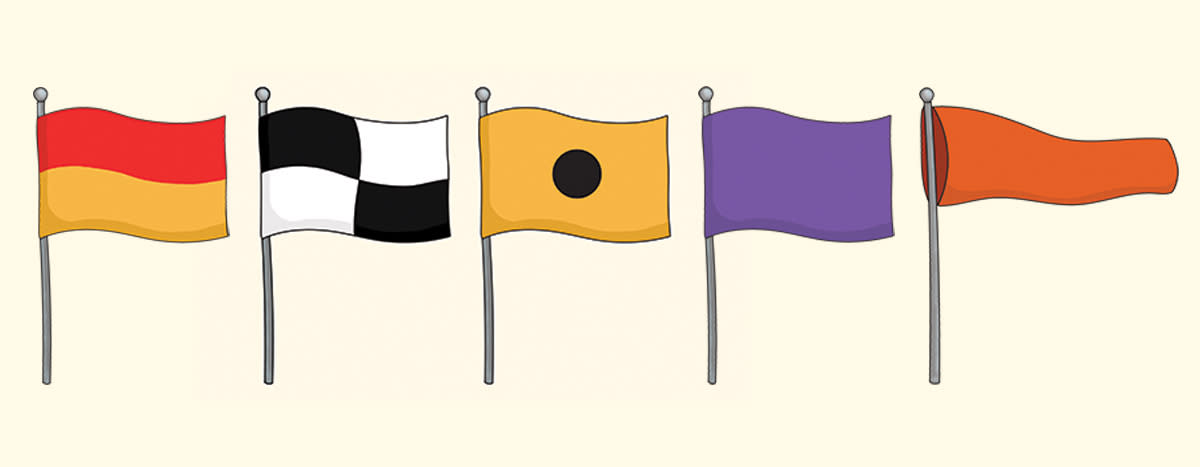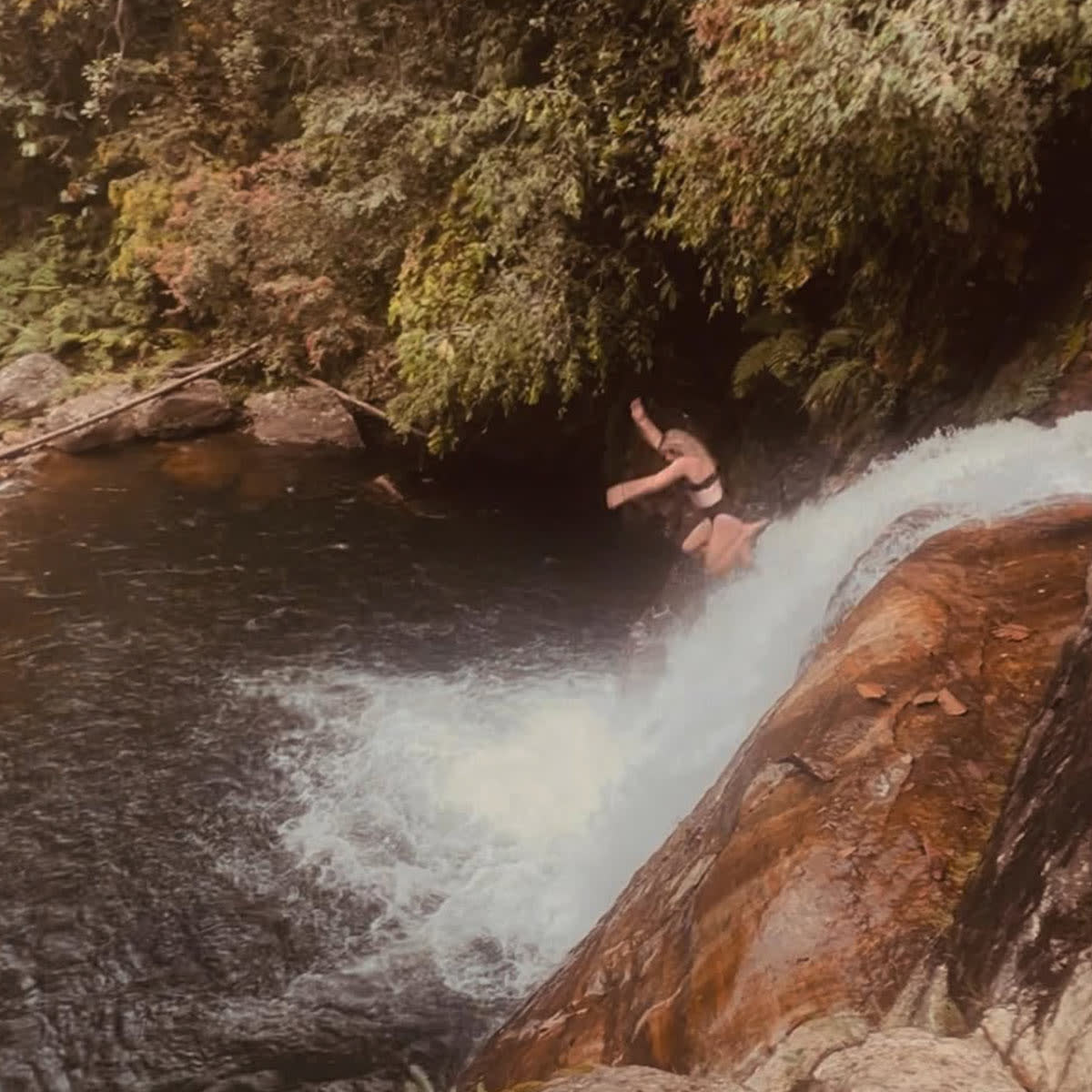
Understanding beach flags: What do the different colors mean?
February 4, 2025You have most certainly seen a flag or two at the beach on your way out to catch some good waves. Sometimes the flag is yellow, red, purple or even a combination of different colours. These flags are hoisted to keep you safe in the water, but do you know what they actually mean? Here’s a guide with all the flags you should remember for your future trips to the beach!
While learning to surf it's important to know what's going on around you, whether it's the other surfers in the water or the conditions of the waves. But have you ever really paid attention to the different warning flags at the beach and what they mean? When is it safe to go out for a surf session or a refreshing swim in the ocean? When should you be cautious and when is it actually really dangerous to surf?
Beach flags are up for your safety in the water and it’s important for us surfers to know what the different colours mean. Understanding why a purple or yellow flag is hoisted could be the difference between a nice surf session and a very dangerous experience with scary consequences.
Why are there flags at the beach?
Beach flags exist to inform beachgoers of water conditions, potential hazards, and designated activity zones. They help prevent accidents, guide swimmers to safe areas, and keep surfers and swimmers separated for safety.
What are the different flag beaches?
“Flag beaches” refer to beaches where lifeguards use a flag system to indicate conditions. Many popular beaches worldwide, including those in the UK, US, and Australia, use beach flag systems to ensure water safety.
The most common warning flags at the beach – The colours and what they mean
Thankfully, there aren't a massive number of flags to memorize and it’s not really rocket science. Most of the flags are easy to guess what they mean: green means safe, yellow means moderate and red means rougher conditions. So far so good. But that about purple? Black and white? Or orange cone-shaped?
The guidelines for the flags listed below are developed by the international standard from the International Life Saving Federation (ILS). This is a universal standard, but keep in mind that flags may look different in some countries and regions.

10 warning flags for beach safety (more info on each flag below!)

Alright, let’s look at the different flags and what they mean:
Green flag: Low hazard* – Calm surf and safe to swim
Yellow flag: Medium hazard – Moderate surf and/or currents
Single red flag: High hazard – High surf and/or strong currents and swimming not recommended
Double red flags: Very dangerous –Water is closed to public use
Red and yellow flag: Recommended swimming area with lifeguards
Black and white quartered flag: Surfing area – Swimming not allowed
Yellow flag with a black ball flag: No surfboards and other non-powered watercraft are allowed
Purple flag: Dangerous stinging marine life has been spotted
Orange windsock flag: Offshore winds are present so inflatables should not be used
Red and white quartered flag: Emergency evacuation
*Hazard: a potential source of harm
Note: the absence of a flag doesn't mean that the water is safe!

Green flag – Low hazard
Meaning: Safe to surf and swim in mild conditions
A green flag indicated that the surf conditions are calm. Unless there are other flags up, you’re free to use watersport gears like bodyboards and surfboards. The green flag shows that there is a low risk of danger, but the ILS did not adopt the green flag! The main reason for this was that there are always some risks present in the water. So have fun and enjoy your beach day – but always keep an eye out for changes in the conditions. Sometimes Mother Nature does whatever she wants!
Yellow flag – Medium Hazard
Meaning: Take caution, moderate surf and/or currents
This flag is up when the surf is moderate and/or there can be currents in the water. The surf can be rougher these days, so don’t be surprised to find high waves or small rip currents. Good swimmers should be cautious in the waves while weak swimmers are advised to not go in at all. It’s a good idea to stay close to the lifeguard when the yellow flag is up.
Single red flag – High hazard
Meaning: Dangerous conditions, high surf and/or strong currents. No swimming
Swimmers are discouraged from entering the water while the red flag is up. The conditions are dangerous and in some countries, you can even get fined if you enter the water with a red flag. The surfers who decide to surf need to be very careful. Be prepared for big waves and strong currents! These conditions are rough and dangerous, so you need to be VERY careful.
Double red flag – Water is closed to the public
Meaning: Very dangerous conditions
During a double red flag, you should stay far away from entering the water, due to extremely high hazards. The surf conditions are extreme and the water is closed to public use. The double red flag is used when the surf conditions are at their most dangerous state. Do you want to surf in these conditions? Please rethink! We advise you to abort the mission no matter what!

Red and yellow flag – Swimming area protected by lifeguards
Meaning: Recommended swimming/body surfing area with lifeguard supervision
Unlike the yellow flag and the red flag, this one has nothing to do with danger in the water. When the red and yellow flag is up it means that lifeguards are present. Usually, you’ll see one of these flags at one part of the beach and another one at another, the area in between is protected by the lifeguards and is where you’ll be recommended to swim.
Black and white quartered flag – Surfing area
Meaning: Area for surfboards and other non-powered watercraft
When this flag is up it shows that the area is used for surfing and using other non-powered watercraft. Just like the red and yellow flags, you often find these flags in pairs where the area in the middle indicates the zone for surfing. Don’t use this area for swimming. For the non-surfers: stay out to stay safe!
Yellow flag with a black ball – No surfing
Meaning:Surfboards and other non-powered watercraft are not allowed
When this flag is up it means that you need to leave your board at the beach, because it’s a non-surfing (or any other types of non-powered watercraft) area.
Purple flag – Dangerous marine life
Meaning: Marine life has been spotted
When you see the purple flag you need to be cautious in the water, since it signals that dangerous marine life has been spotted in the area. Animals such as jellyfish, sea snakes and stingrays can be found at this time, which can cause painful injuries. So you swim at your own risk! This flag is not used for shark spotting.
Orange windsock flag – Shows the wind direction
Meaning: Offshore winds present, inflatables should not be used
The orange windsock flag is a warning of high winds. When the wind is offshore you’ll need to be extra careful. Offshore winds can sweep you out to the ocean and it can be quite hard to get back to the beach. So leave your big, floating flamingo at home during these winds!
Red and white flag – Emergency evacuation

Meaning: Leave the water immediately due to emergency
When the red and white flag is hoisted you must leave the water at once! The emergency can be the presence of a shark, contaminated water or if the lifeguard needs to search the water for a lost person. The double red flag can also be used for these kinds of emergencies. Get out right away!
Do you want to see the full list of the flags? Check out the International Life Saving Federation’s beach safety information here.
Beach warning signs
In addition to the beach warning flags, there can also be warning signs at the beach. Most of the signs are easy to understand, but it doesn't hurt to take a closer look at them just in case. At the City and County of Honolulu website, there’s a list of beach warning signs with good descriptions of what they mean.
If you feel unsure or spot a danger at the beach
Do you still feel a bit unsure? Don't hesitate to go up to the lifeguard and ask them about the current conditions. Also let the lifeguards know if you see anyone struggle in the water, it’s better to be safe than sorry!
NEWSLETTER
Stay up to date, sign up for our newsletter

Beatrice Lindfors
About the author: My name is Beatrice, but Bea for short, and I’ve been a writer and content creator for Lapoint since 2022. My life revolves around my laptop and backpack as I travel the world (always with a stop in Ericeira; the camp vibe there and the Portuguese sunset have my heart). Life goal? Visit every country.
Obsession? The Sri Lanka waves, the Atlantic Ocean and tracking down the best coffee –whichever my current location is.

